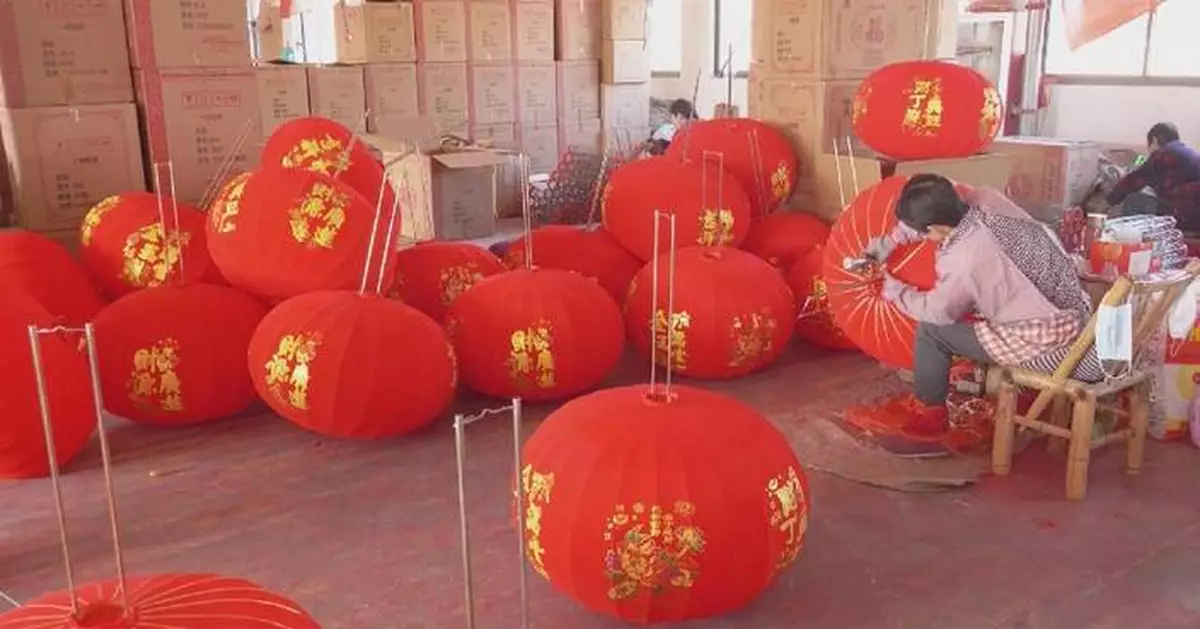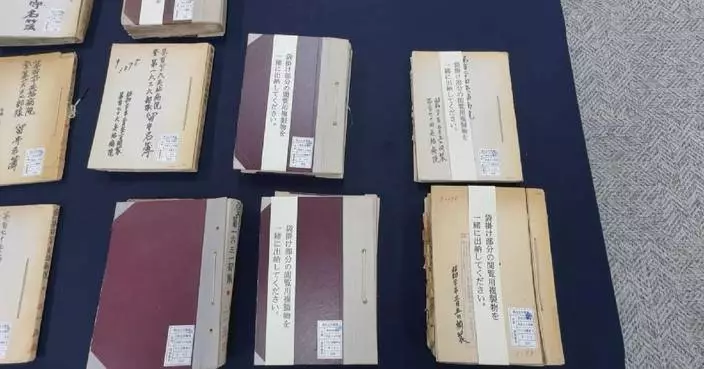As the Spring Festival, which falls on January 29 this year, draws near, demand for festive decorations, particularly lanterns, is reaching a peak in China.
In Xiuning County of east China's Anhui Province, traditional handcrafted lanterns are seeing a significant surge in sales.
At a lantern factory, workers are busy making a variety of red lanterns, known for their bright colors and beautiful designs. Recently, these traditional lanterns have experienced a boom in sales, with local businesses reporting a sharp increase in orders and a doubling of their sales volume.
"Now we're in the peak season of lantern production. We have increased the production lines from six to eight. We are working overtime every day, producing more than 4,000 lanterns per day. In one month, the number is expected to reach hundreds of thousands, more than double the usual amount," said Liu Penghui, general manager of a light decoration company in Huangshan City.
In addition to traditional lanterns, innovative designs have also gained in popularity.
Among the most sought-after are LED lanterns, which create dynamic light effects and have a three-dimensional feel.
These modern lanterns are especially favored by younger consumers, prompting many local businesses to expand their production capacity to meet the growing market demand. Meanwhile, in Nanchang City of east China's Jiangxi Province, a renowned dragon lantern production base is also witnessing a surge in both domestic and international orders.
With over 50 workers involved on the production line, the factory is operating at full capacity.
More than 100 finished dragon lanterns are produced daily on average.
The factory has received over 3,500 orders in the month prior to the Spring Festival, accounting for more than 30 percent of the annual total.
"Many orders were placed at the end of the year, and we now are working overtime to produce them," said Shi Kebin, a dragon lantern craftsman.
While preserving traditional techniques, local manufacturers have continuously innovated, breathing new life into this ancient craft.
"We updated the old version at the end of 2024. Based on the original structure, we use engineering plastics to replace the bamboo. It is lighter. Besides, there is no danger of being infested or smelling musty," said Shi.

Festive lantern sales soar as Spring Festival nears



















































